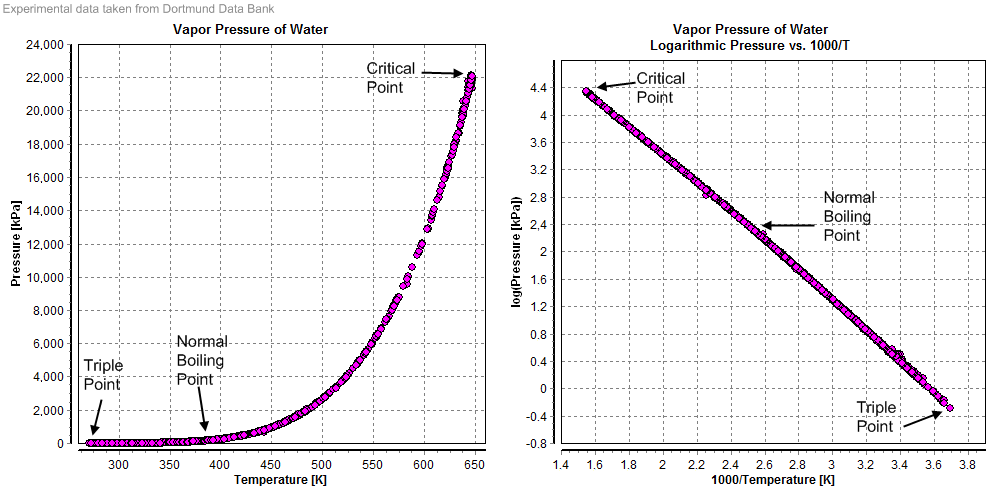Physical Principles
Author: Hans-Jürgen Schwarz
English Translation by Sandra Leithäuser
Back to Air humidity measurement
Abstract
Dalton's Law
The total pressure of a gas mixture is composed by the sum of the partial pressures of the constituents.[1]
In simplified terms: the air consists of dry air and water vapor
Failed to parse (SVG (MathML can be enabled via browser plugin): Invalid response ("Math extension cannot connect to Restbase.") from server "https://wikimedia.org/api/rest_v1/":): {\displaystyle P = P_w + P_dry}
wherein Pw constitutes the partial pressure generated by water vapor and Pdry represents the sum of all partial pressures of all the other gases.
| The total pressure of a mixture of ideal gases is equal to the sum of partial pressures of the individual gases in the mixture. |
Water vapor partial pressure in the air
In a gas mixture (volume V, temperature T), each component gas has a partial pressure, pi, which it would have, if all the other gases were not present[2].
For the relationship between pi, V and T, the following equation applies:
Failed to parse (SVG (MathML can be enabled via browser plugin): Invalid response ("Math extension cannot connect to Restbase.") from server "https://wikimedia.org/api/rest_v1/":): {\displaystyle p_i*v = n*R*T}
The total pressure is the sum of all partial pressures. Water vapor partial pressure is at
| 22 ºC and 100 %rF | = 2645 Pa |
| 22 ºC and 67 %rF | = 1772 Pa |
(1 Pa = 1N/m² = 0.01 mbar)
The atmospheric pressure in Hannover, for example, fluctuates between 964 hPa and 1042 hPa.
The partial pressure of water vapor at a given temperature cannot exceed certain limits, i.e. saturation. When the saturation pressure ps is increased by additional water supply (humidification), the partial pressure stays the same, but the excess water vapor precipitates in the form of liquid water. This is called condensate. There is no simple physical relation between temperature and saturation pressure, which is why the relationship is expressed in graphical or in table form.
The saturation pressure increases considerably, when temperature rises. For instance, at 0 ºC it is 611 Pa and at 20 ºC already 2338 Pa.
WebLinks
- ↑ The physics of the museum environment by Tim Padfield: http://www.natmus.dk/cons/tp/index.htm
- ↑ http://de.wikipedia.org/w/index.php?title=Partialdruck&oldid=77071731 , 29.07.2010
